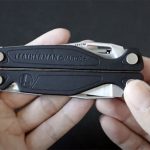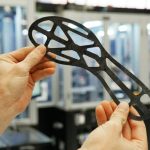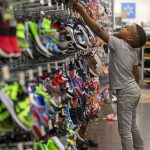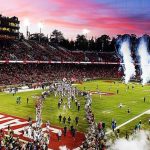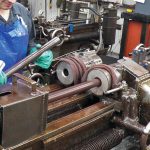Retailers in the active sports lifestyle market posted reasonable sales growth for the fiscal third quarter in the light of the general malaise in the market, as sales grew 3.4% on a consolidated basis for the public company retailers tracked by Sports Executive Weekly.
That mid-single-digits sales increase was behind the growth posted by industry vendors (see SEW_0852), but retailers performed much better on the bottom line.
Margins slid modestly on a consolidated basis, largely attributable to higher markdowns even at that point in the recessionary cycle. The margin decline, however, was offset by the sales increase to boost profitability.
Third quarter results shown in the chart on page 7 are posted for those companies that have reported for the period ended closest to the first of November. However, because the report is not a clear picture of the entire industry, SEW believes the total absolute numbers are less significant than the trending information provided in ratios and the percentage variances.
The quarter was fairly straight forward in terms of one-time charges, acquisition gains or recently-turned-public companies, with the exception of Collective Brands merging the results of Payless ShoeSource and The Stride Rite Group. The Stride Rite Group boosted consolidated retailer results by approximately 20 basis points as it offset a sales decline at Payless.
Meanwhile, Gander Mountains acquisition of Overtons had a similar effect to the consolidated results.
The disappointing comps results reported in the second quarter continued into the third period. For Q2, only 10 of the retailers tracked posted sales gains. For the third quarter, the picture was even bleaker as only eight of the retailers tracked posted comps improvements for the quarter and 4 of those came from Genesco only.
The comps declines did have an effect on gross margins, but by far the largest effect came from Pacific Sunwear, where margins declined nearly 490 basis points largely due to higher markdowns. GSI Commerce, where margins dropped 840 basis points and led to a more than doubled net loss for the third quarter, also fueled the declines.
Consolidated return-on-sales improved 80 basis points to 2.4% of net sales from 1.6% last year.
The return on sales growth largely comes from the turnaround at Foot Locker. Though the retailer slightly missed its guidance for third quarter net income, it switched from a net loss of $33.0 million last year to a net profit of $24.0 million this year as FL anniversaried against a large charge on the bottom line last year. Using pro forma numbers, consolidated retailer net income would have been just below flat for the year.
By and large, retailers took a firm stance with inventories. On a consolidated basis, inventories declined 2.8% from the same point last year with only Internet/catalog and family footwear channels seeing inventories increase for the quarter. At family footwear, inventories grew 10 basis points quicker than sales, but can be completely attributable to the jump at DSW.
Looking at trade channels, Internet/catalog paced sales, but at the expense of the bottom line. Meanwhile, Specialty did very well on the bottom line, but largely because of the charge Foot Locker recorded in the year-ago quarter. Full line saw a healthy mid-singles increase in consolidated sales, but the bottom line dropped at all chains except Gander Mountain.



